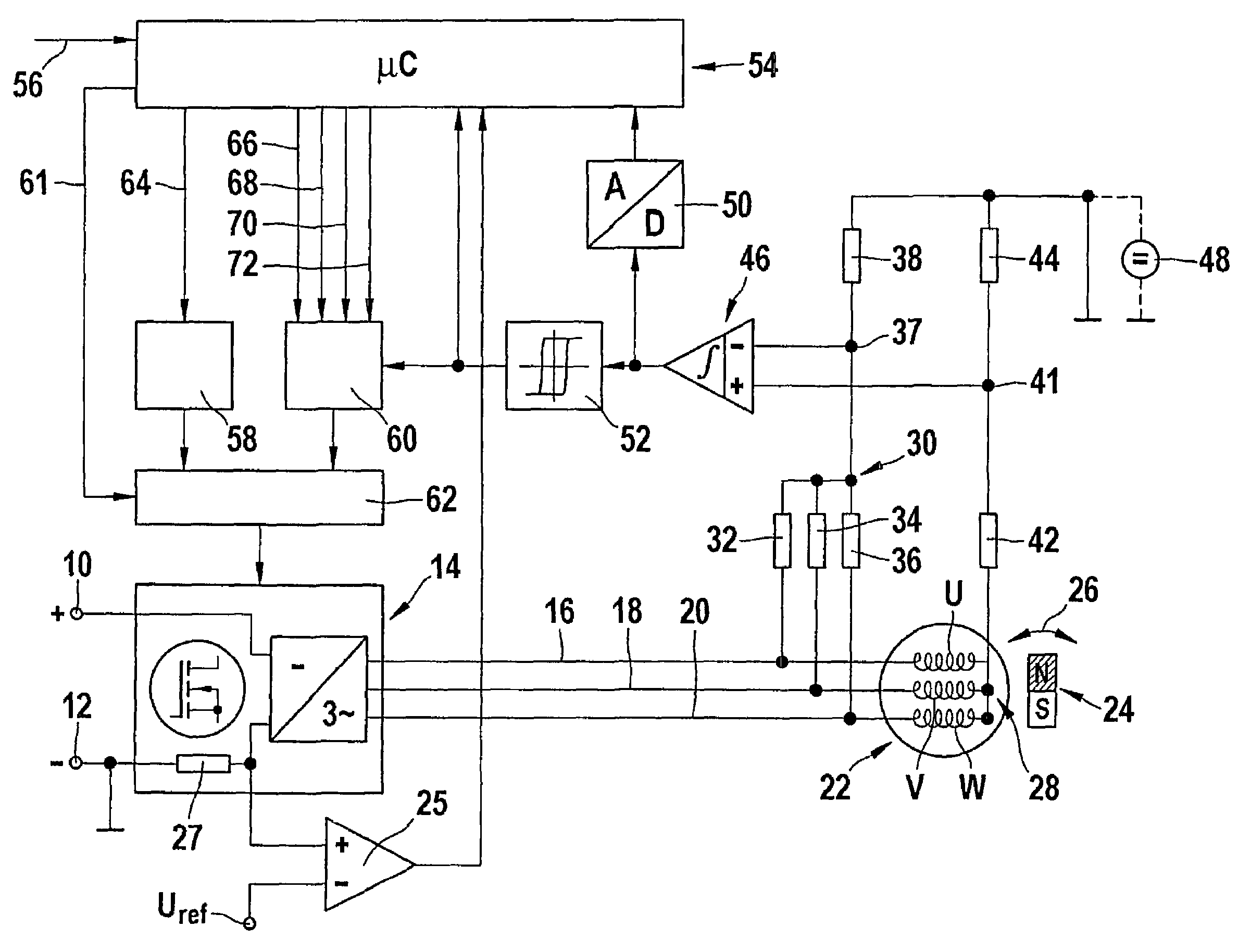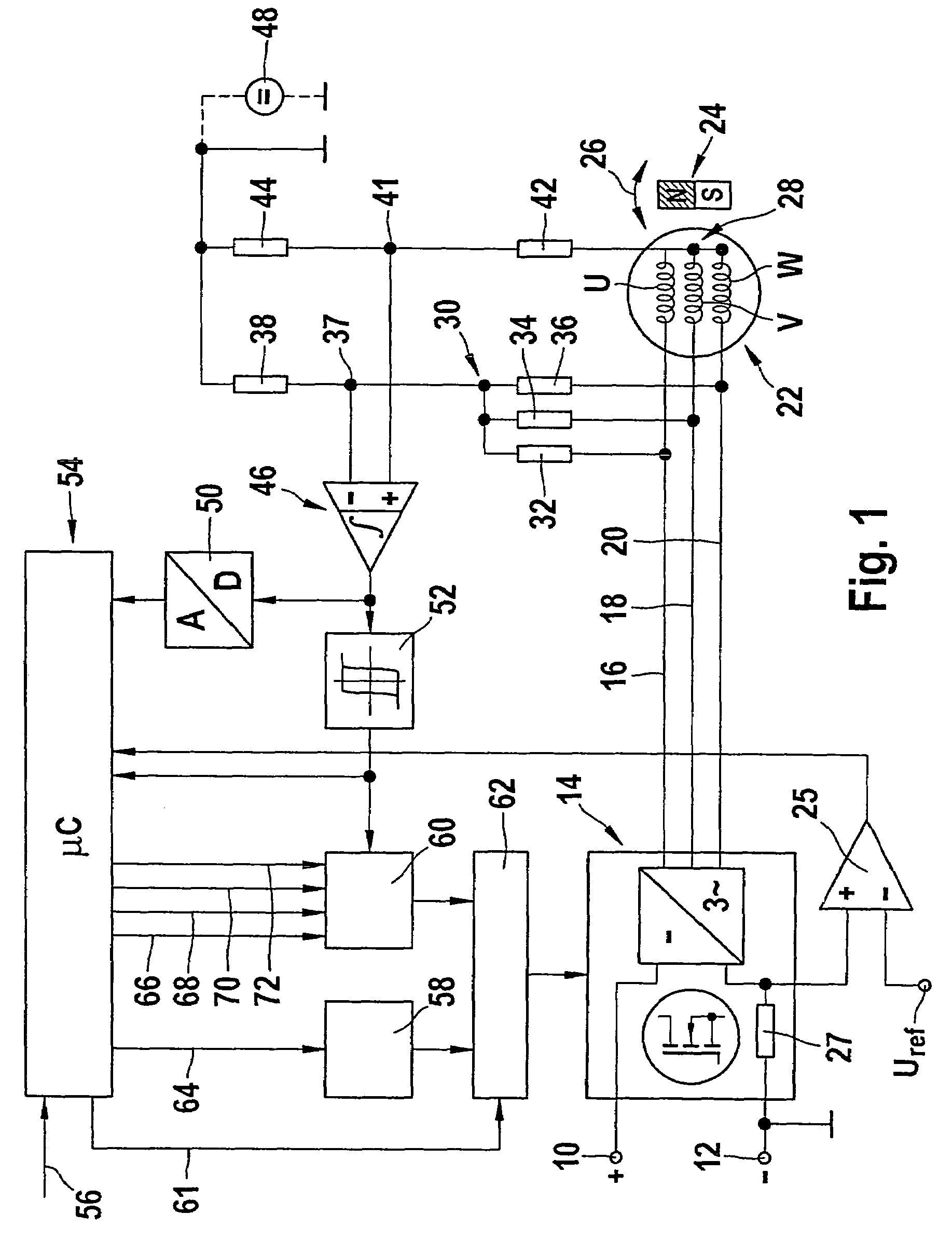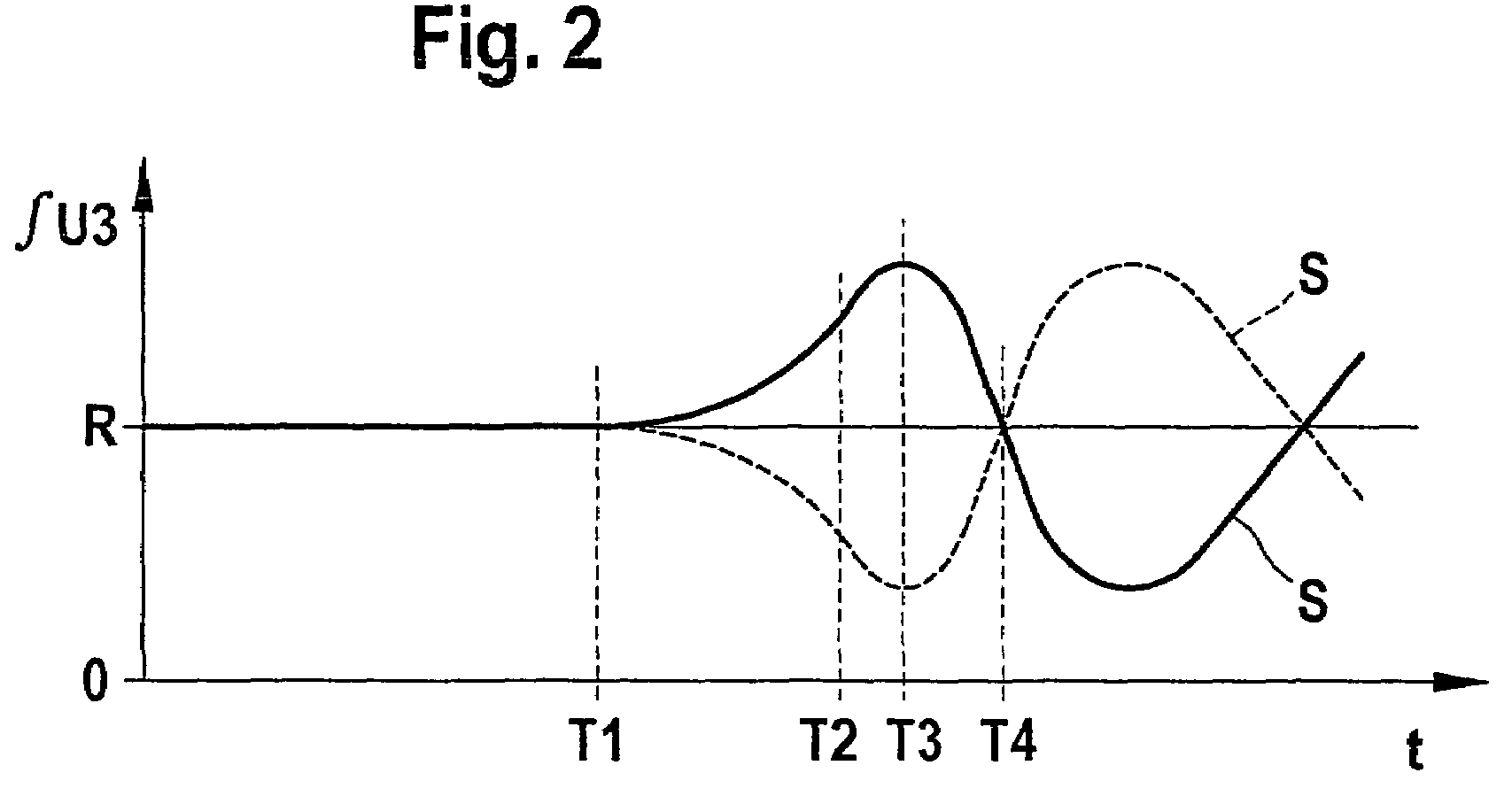Method for starting a sensorless, electronically commutatable direct current motor
a direct current motor and sensorless technology, applied in the direction of electronic commutators, motor/generator/converter stoppers, dynamo-electric converter control, etc., can solve the problem of becoming very complex the known method
- Summary
- Abstract
- Description
- Claims
- Application Information
AI Technical Summary
Benefits of technology
Problems solved by technology
Method used
Image
Examples
Embodiment Construction
[0014]In FIG. 1, 10 designates the positive pole and 12 the negative pole, connected to ground, of a direct voltage source, which supplies an inverter 14 constructed as a six-pulse converter bridge with MOSFET transistors. The outputs of the inverter are connected via leads 16, 18, 20 to the phase windings U, V, W of the stator 22 of a sensorless, electronically commutatable direct current motor, whose permanent-magnetically excited rotor is shown at 24. A double arrow 26 at the rotor 24 indicates that the rotor can be driven in opposite directions of rotation.
[0015]Via a further output of the inverter 14, the current in the direct voltage circuit, upon the imposition of current pulses on the phase windings U, V, W, is delivered to a measuring shunt 27, connected to ground, for ascertaining the rotor position at standstill of the machine. The voltage drop at the shunt 27 is compared in a comparator 25 with a reference voltage Uref, and the output signal of the comparator 25 is deliv...
PUM
 Login to View More
Login to View More Abstract
Description
Claims
Application Information
 Login to View More
Login to View More - R&D
- Intellectual Property
- Life Sciences
- Materials
- Tech Scout
- Unparalleled Data Quality
- Higher Quality Content
- 60% Fewer Hallucinations
Browse by: Latest US Patents, China's latest patents, Technical Efficacy Thesaurus, Application Domain, Technology Topic, Popular Technical Reports.
© 2025 PatSnap. All rights reserved.Legal|Privacy policy|Modern Slavery Act Transparency Statement|Sitemap|About US| Contact US: help@patsnap.com



